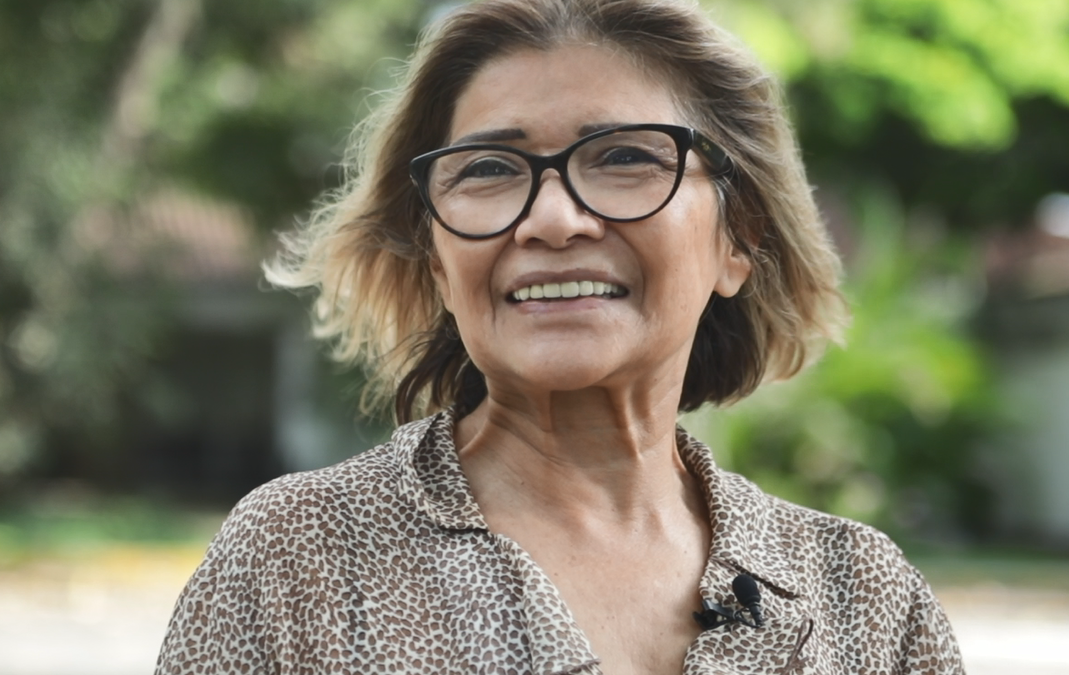We spoke to Carmen Rosa Chávez, a specialist from the Directorate General for Agricultural Development and Agroecology at the Ministry of Agrarian Development and Irrigation (MIDAGRI) in Peru, about the importance and impact that the Clima-LoCa project could have on cocoa farmers in the region, especially small producers in her country.
What do you consider to be the importance of the Clima-LoCa project for the three prioritized countries?
The Clima-LoCa Project will make it possible to identify the progress made in the three countries and to exchange and systematize the results and lessons learned. The project will consider each country’s specific problems, their characteristics and define their interventions.
Colombia, Ecuador, and Peru all produce fine aroma cocoa. What is the region’s potential in the European market?
Latin America’s potential to produce fine cocoa lies in its great and wide genetic diversity, which is closely related to its unique flavor profile globally. This makes it possible to produce a range of differentiated products for segmented markets, in addition to the management of cocoa in forests, agroforestry, well-told stories, and its bioeconomy in the chain.
How important is it for a project like Clima-LoCa to have the public and private sectors, governments, universities, and the different stakeholders in the cocoa chain working together?
Its importance rests in strengthening governance among all stakeholders in the chain, having guidelines, defining scope, agendas, principles, and possible weaknesses within the global context that every economy is experiencing today. That means, fulfilling duties and rights with alliances among the stakeholders to achieve common objectives, also in line with national interests.
What do you think of the Clima-LoCa team, a multidisciplinary team working from Belgium, France, the Netherlands and the three countries of the study?
In Peru’s case, there is an institutional framework in the chain that works in a coordinated and joined up way, but it needs to be better integrated with government, regionally and locally. Activities with cooperation organizations also need to be aligned.
Coordination activities are now starting up again as they were limited to online meetings during the pandemic. Knowledge management from the field is important, from the bottom up. The knowledge of producers is key to understanding and knowing the reality on the ground and defining differentiated strategic interventions in the Clima-LoCa project.
Why is the Peruvian Ministry of Agrarian Development and Irrigation backing the Clima-LoCa project?
We are backing the project because innovation is part of the Ministry’s public policy to deepen strengths through differentiation in quality, the development of a variety of attributes of origin (such as the genetic variety of the Amazon being a center of origin for this species), and to enhance social aspects such as cocoa grown by indigenous peoples. We also see it as a development opportunity for rural women and youth, in terms of agroforestry systems in productive landscapes, with productive diversification, generating ecosystem services that help mitigate the effects of climate change, and help our farmers receive a decent income.
What do you see as the project’s biggest challenges in achieving its goal of promoting low-cadmium, climate-relevant innovations?
The main challenge is to offer a technological package that the producer can afford. That means, one that does not affect his or her profitability. For example, obtaining varieties that meet standards for good quality, good health, good productivity, resilience to climate change, and that do not absorb heavy metals.
It is also important to focus more on good agricultural and environmental practices, and post-harvest practices, since climate and soil can contribute to flavor differences in cocoa. In addition, it is very important to implement a traceability system to demonstrate the contribution to zero deforestation, cocoa quality and safety, and acceptance by the market.

